![[img]](https://tuprints.ulb.tu-darmstadt.de/1050/1.hassmallThumbnailVersion/Thesis00.pdf) 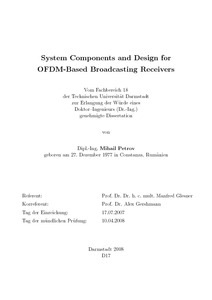 Preview |
|
Text
Thesis00.pdf
Copyright Information: CC BY-NC-ND 2.5 Generic - Creative Commons, Attribution, NonCommercial, NoDerivs .
Download (200kB)
| Preview
|
![[img]](https://tuprints.ulb.tu-darmstadt.de/1050/2.hassmallThumbnailVersion/Thesis01.pdf) 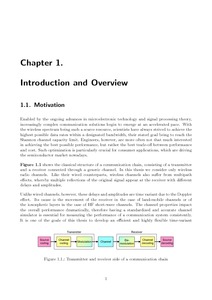 Preview |
|
Text
Thesis01.pdf
Copyright Information: CC BY-NC-ND 2.5 Generic - Creative Commons, Attribution, NonCommercial, NoDerivs .
Download (97kB)
| Preview
|
![[img]](https://tuprints.ulb.tu-darmstadt.de/1050/3.hassmallThumbnailVersion/Thesis02.pdf) 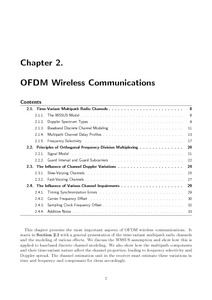 Preview |
|
Text
Thesis02.pdf
Copyright Information: CC BY-NC-ND 2.5 Generic - Creative Commons, Attribution, NonCommercial, NoDerivs .
Download (1MB)
| Preview
|
![[img]](https://tuprints.ulb.tu-darmstadt.de/1050/4.hassmallThumbnailVersion/Thesis03.pdf) 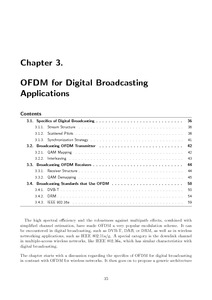 Preview |
|
Text
Thesis03.pdf
Copyright Information: CC BY-NC-ND 2.5 Generic - Creative Commons, Attribution, NonCommercial, NoDerivs .
Download (615kB)
| Preview
|
![[img]](https://tuprints.ulb.tu-darmstadt.de/1050/5.hassmallThumbnailVersion/Thesis04.pdf) 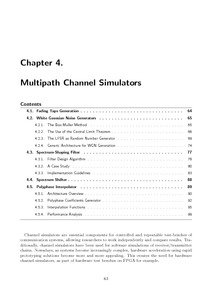 Preview |
|
Text
Thesis04.pdf
Copyright Information: CC BY-NC-ND 2.5 Generic - Creative Commons, Attribution, NonCommercial, NoDerivs .
Download (1MB)
| Preview
|
![[img]](https://tuprints.ulb.tu-darmstadt.de/1050/6.hassmallThumbnailVersion/Thesis05.pdf) 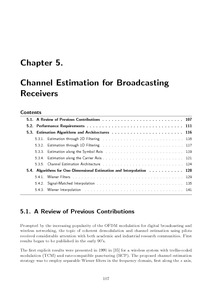 Preview |
|
Text
Thesis05.pdf
Copyright Information: CC BY-NC-ND 2.5 Generic - Creative Commons, Attribution, NonCommercial, NoDerivs .
Download (786kB)
| Preview
|
![[img]](https://tuprints.ulb.tu-darmstadt.de/1050/7.hassmallThumbnailVersion/Thesis06.pdf) 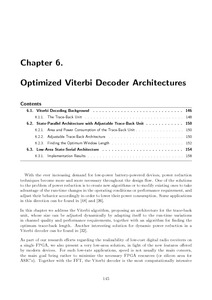 Preview |
|
Text
Thesis06.pdf
Copyright Information: CC BY-NC-ND 2.5 Generic - Creative Commons, Attribution, NonCommercial, NoDerivs .
Download (416kB)
| Preview
|
![[img]](https://tuprints.ulb.tu-darmstadt.de/1050/8.hassmallThumbnailVersion/Thesis07.pdf) 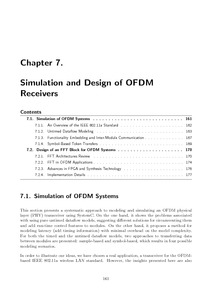 Preview |
|
Text
Thesis07.pdf
Copyright Information: CC BY-NC-ND 2.5 Generic - Creative Commons, Attribution, NonCommercial, NoDerivs .
Download (338kB)
| Preview
|
![[img]](https://tuprints.ulb.tu-darmstadt.de/1050/9.hassmallThumbnailVersion/Thesis08.pdf) 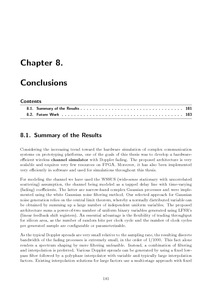 Preview |
|
Text
Thesis08.pdf
Copyright Information: CC BY-NC-ND 2.5 Generic - Creative Commons, Attribution, NonCommercial, NoDerivs .
Download (294kB)
| Preview
|
| Item Type: |
Ph.D. Thesis |
| Type of entry: |
Primary publication |
| Title: |
System Components and Design for OFDM-Based Broadcasting Receivers |
| Language: |
English |
| Referees: |
Glesner, Prof. Dr. Manfred ; Gershmann, Prof. Dr. Alex |
| Date: |
16 July 2008 |
| Place of Publication: |
Darmstadt |
| Date of oral examination: |
10 April 2008 |
| Abstract: |
Approaching the channel capacity limit has been the main goal of communication engineers since the pioneering work of Claude Shannon. This capacity depends primarily on the chosen schemes for channel coding and modulation, which need to be tailored to the specifics of the propagation environment. From an engineering perspective, it is important not only to maximize the channel capacity, but also to achieve this with the least complexity. In addition to noise, a major impairment in terrestrial transmissions is the multipath nature of the channel, which affects the receiver performance dramatically. Over the past decade, orthogonalfrequency-division multiplexing (OFDM) has emerged as the modulation of choice for such environments because of its inherent resilience to multipath effects and relative simplicity of the channel equalization, which allows for low-cost receivers. Nowadays, OFDM is a mature technology, being employed by various standards for both wireless networking and digital broadcasting. The present doctoral thesis deals specifically with baseband receiver architectures for OFDM digital broadcasting, focusing on digital OFDM demodulation and to a lesser extent on forward error correction. The research scope includes the architectural exploration and optimization of several blocks at algorithmic and structural level: channel equalizer, QAM demapper, and Viterbi decoder. Because of their critical role, the channel equalizer and the Viterbi decoder are each treated in a dedicated chapter. The proposed architectures are optimized for area and take advantage of the new features found in modern FPGA's, such as embedded memories, multipliers, and shift registers. Another important contribution of this thesis is the development of an efficient simulator for multipath channels with Doppler fading. Using an accurate channel simulator is essential for comparing simulation results between different teams. Especially critical is the modeling of the fading taps, since the fading process is much slower than the sampling rate. The proposed architecture is extremely scalable and suitable for both hardware and software implementation, the fading taps being generated by filtering white Gaussian noise. In this context, especially innovative are the solutions proposed for Gaussian noise generation and single-stage polyphase interpolation. A final chapter of the thesis is dedicated to the functional modeling of OFDM receivers in SystemC and to the hardware design optimized for FPGA. The FFT block, which is the core of an OFDM demodulator, has been selected as a case study. |
| Alternative Abstract: |
| Alternative Abstract | Language |
|---|
Seit der grundlegenden Arbeit von Claude Shannon ist es zum Hauptziel jedes Nachrichtentechnikers geworden, die Kanalkapazitätsgrenze zu erreichen. Diese Kapazität hängt hauptsächlich von den verwendeten Kanalkodierungs- und Modulationsverfahren ab und muss den Gegebenheiten der Ausbreitungsumgebung angepasst werden. Aus wirtschaftlicher Sicht ist es aber wichtig, nicht nur die Kanalkapazität zu maximieren, sonder dies mit dem geringsten Implementierungsaufwand zu erreichen. Eine weitere Störung, die bei einer terrestrischen Übertragung neben dem Rauschen auftritt, ist die Mehrwegausbreitung des Kanals, die den Empfang sehr stark beeinträchtigt. In den letzten Jahren hat sich OFDM (Orthogonal Frequency Division Multiplexing) als bevorzugte Modulationsart durchgesetzt. Gründe dafür sind die inhärente Tauglichkeit fuer Mehrwegkanäle und die relative Effizienz dieses Kanalentzerungsverfahrens, die die Implementierung preiswerter Empfänger ermöglicht. Heutzutage ist OFDM eine ausgereifte Tachnologie, die in verschiedenen Standards, sowohl drahtlose Netz-werke wie auch digitalen Rundfunk betreffend, angewandt wird. Die vorliegende Doktorarbeit befasst sich besonders mit Basisband-Empfängerarchitekturen für OFDM-basierten digitalen Rundfunk, mit dem Schwerpunkt OFDM-Demodulation und, in geringerem Umfang, Fehler-korrektur. Das Forschungsgebiet umfasst die Architekturuntersuchung und Optimierung verschiedener Empfängerbauelemente auf Algorithmen- und Strukturebene: Kanalschätzer, QAM-Demapper, und Viterbi-Dekoder. Aufgrund ihrer kritischen Rolle werden dem Kanalschätzer und dem Viterbi-Dekoder eigene Kapitel gewidmet. Die vorgeschlagenen Architekturen sind optimiert hinsichtlich der benötigten Chipfläche und nutzen die Eigenschaften moderner FPGA-Bausteine wie eingebettete Speicherblöcke, Multiplizierer oder Schieberegister. Ein weiterer wightiger Beitrag dieser Dissertation ist der Entwurf eines effizienten Kanalsimulators, der die Mehrwegeausbreitung und das Doppler-Fading richtig modelliert. Ein genauer Kanalsimulator ist für den Vergleich der Ergebnisse mehrerer an der Simulation beteiligter Teams unentbehrlich. Besonders wichtig ist die korrekte Fading-Modellierung der einzelnen Taps, da der Fadingprozess viel langsamer ist als die Abtastrate. Die entwickelte Architektur ist fein skalierbar und eignet sich besonders gut fur Hardware- und Software-Implementierungen. Dabei werden die Fading-Taps durch filterung unkorrellierten weissen Gaussschen Rauschens generiert. Besonders innovativ sind in diesem Zusammenhang die vorgeschlagenen Lösungen für die Generierung des Gaussschen Rauschens und für die einstufige Mehrphasen-Interpolation. Das letzte Kapitel ist funktioneller SystemC-Modellierung von OFDM-Empfängern und dem FPGA-optimierten Hardware-Entwurf gewidmet. Der FFT-Baustein, der als Kern eines OFDM-Demodulators angesehen wird, wurde als Fallstudie gewählt. | German |
|
| Uncontrolled Keywords: |
OFDM, digital receivers, broadcast channel simulator |
| Alternative keywords: |
| Alternative keywords | Language |
|---|
| OFDM, digital receivers, broadcast channel simulator | English |
|
| URN: |
urn:nbn:de:tuda-tuprints-10505 |
| Classification DDC: |
600 Technology, medicine, applied sciences > 620 Engineering and machine engineering |
| Divisions: |
18 Department of Electrical Engineering and Information Technology |
| Date Deposited: |
17 Oct 2008 09:23 |
| Last Modified: |
08 Jul 2020 23:11 |
| URI: |
https://tuprints.ulb.tu-darmstadt.de/id/eprint/1050 |
| PPN: |
203991176 |
| Export: |
|



 Drucken
Drucken
 Impressum
Impressum